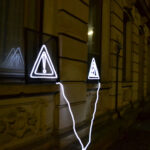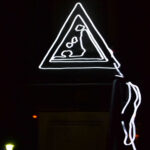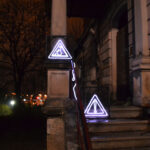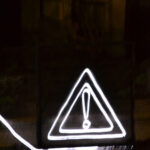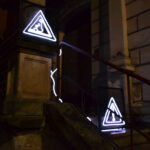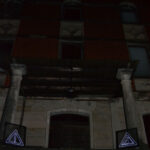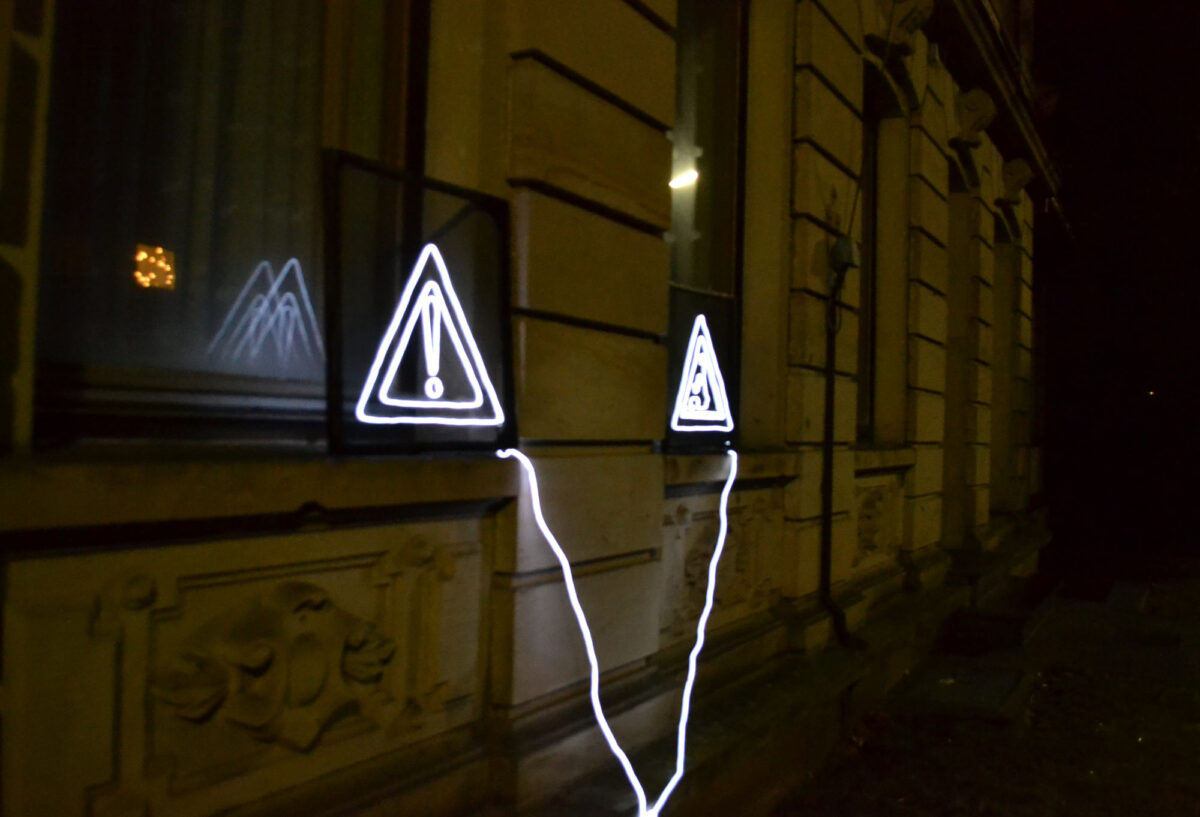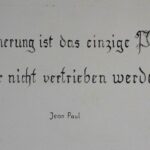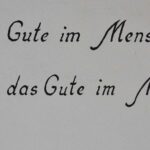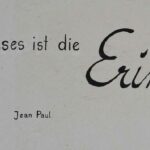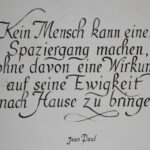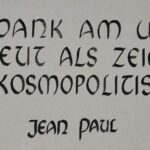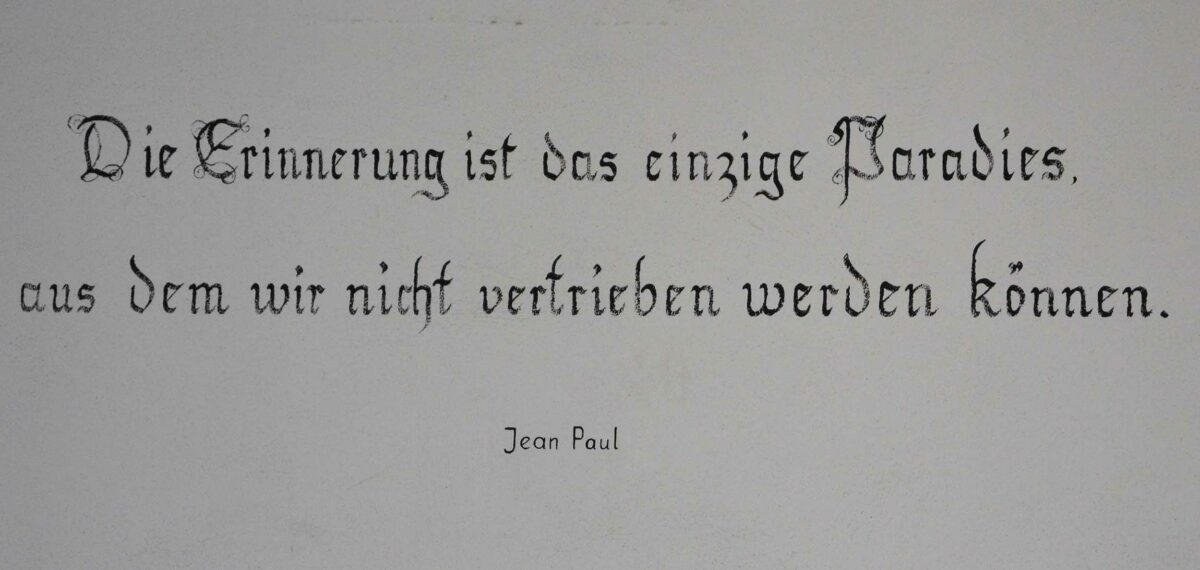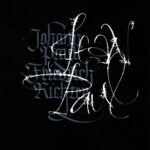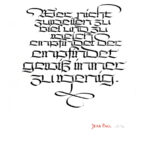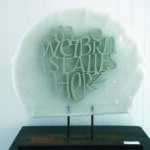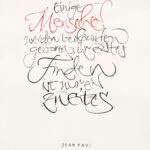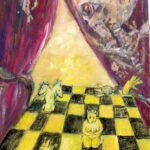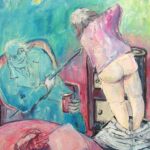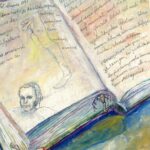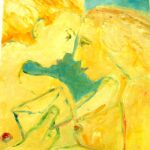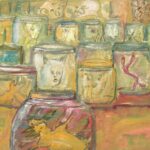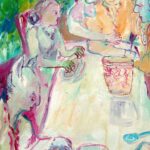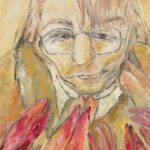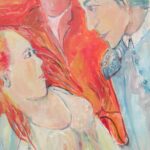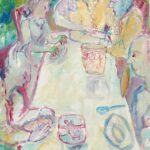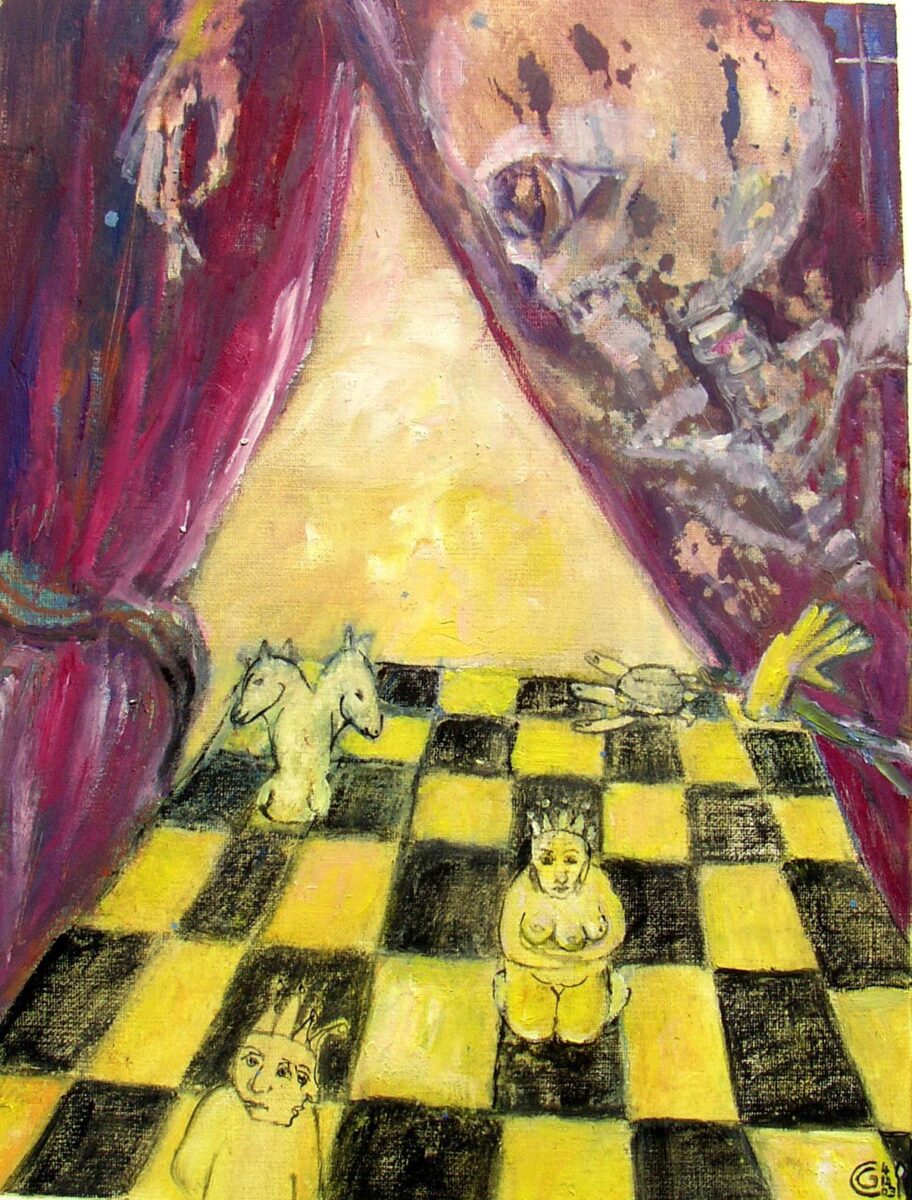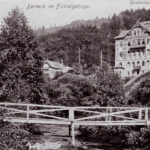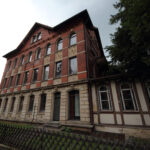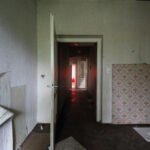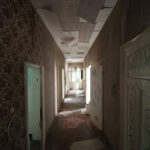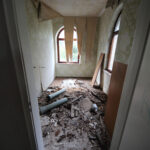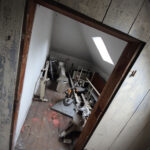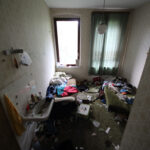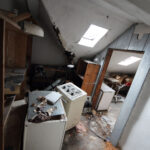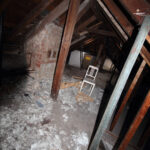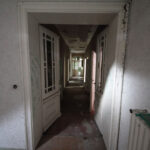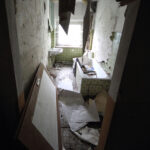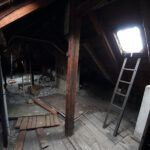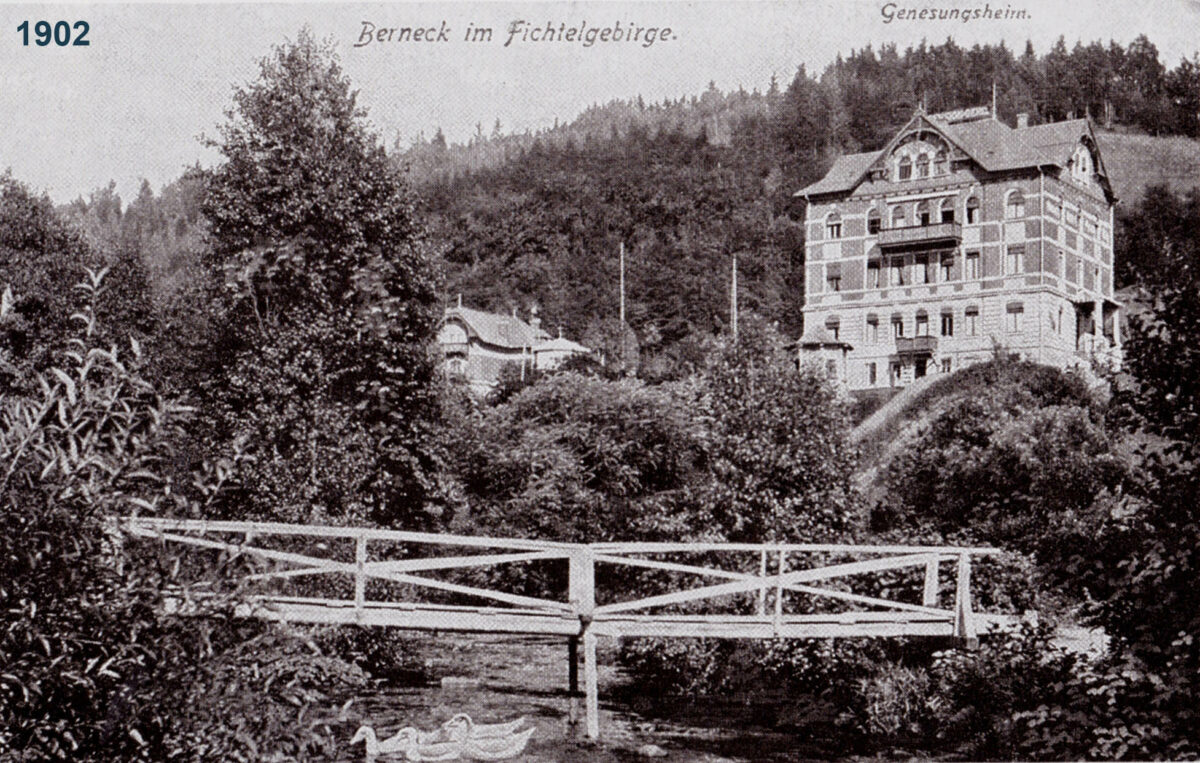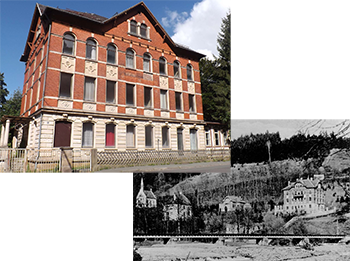Jean Paul Trail
Jean Paul, one of the most eloquent European prose stylists of the Romantic period, spent much time in Berneck – he loved the Bernecker gingerbread, the beer and other regional delicacies. In his honour, the Jean-Paul-Trail was opened in 2010: a 200-kilometer trail that goes from Joditz in the district Hof to Sanspareil in the district of Kulmbach, touching upon places and locations that shaped the life and work of the artist.
The Berlin actor Hans Jürgen Schatz has a particularly close relationship to the work of Jean Paul. In an audio recording, he leads us into the world of the poet.
Near the Dendrological Garden (QR2), an imposing building of red brick is located at the Jean-Paul-Trail: The so-called Old Hospital. Over the years it has seen many uses: as a hotel and café, as a local hospital and district hospital, as a military facility and as a boarding house.
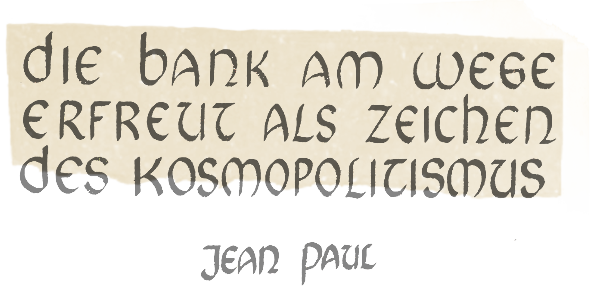
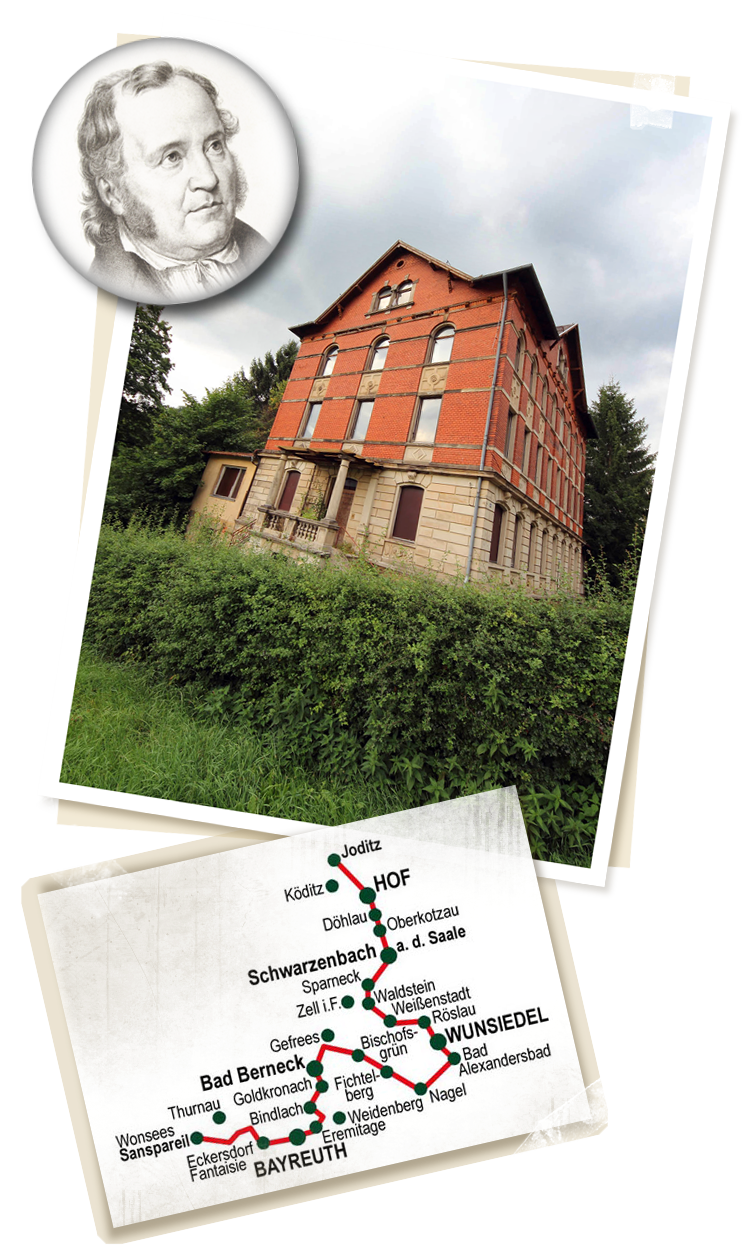
 Jean Paul (1763 – 1825)
Jean Paul (1763 – 1825)
Johann Paul Friedrich Richter was born on March 21, 1763, in Wunsiedel and died on November 14, 1824, in Bayreuth. In his extensive work, the region in which he grew up and lived, its inhabitants and its natural setting play a crucial role.
Jean Paul, as he called himself from 1790, created works of artistic imagination that nonetheless reveal concrete references to his homeland and its specialties. In Berneck he found his beloved gingernut cookies, and he remained in Bayreuth, after his “wandering years” because of its good brown beer.
His lyrics are difficult to access today; his style seems rambling and elaborate, by today’s tastes. Nevertheless, words and phrases coined from Jean Paul’s works have found their way into everyday German, and have even gone global as the ‘untranslatable’ German concepts ‘Doppelgänger’ or ‘Weltschmerz’.
The biographical journey of Jean Paul today connects the four counties Wunsiedel, Hof, Bayreuth and Kulmbach, including 22 towns and municipalities. They are situated on the Upper Franconian-wide Jean-Paul-Trail, which provides stations with comprehensive information on the life and work of this extraordinary poet, panels with his aphorisms, suggested itineraries, and walking tours.
Additionally, the more than 200 kilometer long hiking trail offers wonderful impressions of nature, unique views of town and country, and the chance to sample culinary specialities in restaurants accessible from the trail.
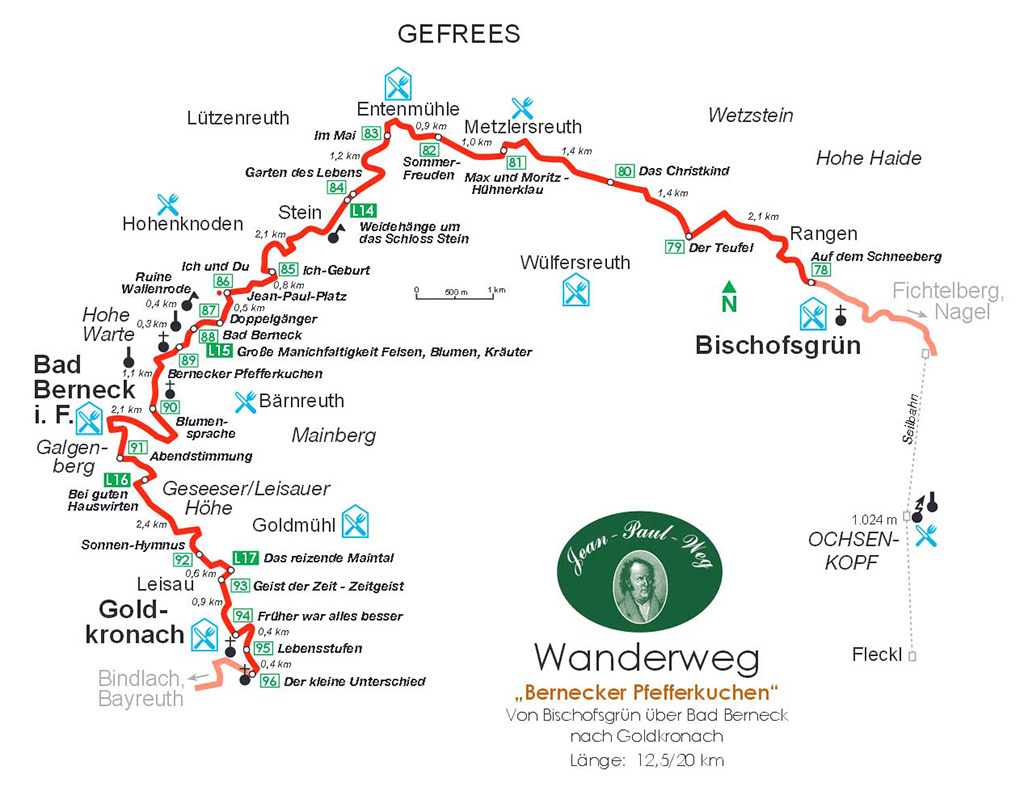
Like many visiting artists in Bad Berneck, …
… Dave Checkley, an installation and lighting artist from Birmingham, UK, found the abandoned hospital fascinating and wondered why it remained derelict. At this and other locations (see QR 1 and 22), he created two self-lit warnings signs – Be Careful and Falling Rocks – as a reminder to do something for this imposing building before they are good for nothing but demolition.
 Hans-Jürgen Schatz and Jean Paul
Hans-Jürgen Schatz and Jean Paul
The Berlin actor Hans-Jürgen Schatz has been a champion of Bad Berneck for many years: “I like the people here, I appreciate the Franconian cuisine and am in love with the rich cultural landscape.” His intensive immersion with the Fichtelgebirge inspired him to study the life and work of the writer Jean Paul (1763-1825). Through readings throughout Germany and on CD, Hans-Jürgen Schatz advertises tirelessly for Jean Paul, the renowned Upper Franconian who immortalized Berneck in the novels “Siebenkäs” and “Der Komet”.
Schatz recites lines from “Siebenkäs,” commenting, “These poetically describe the entrance from Berneck into the Ölschnitz valley, from what is today’s Spa Park. The landscape is essentially the same now as it was when Jean Paul saw it, and as Ludwig Richter recorded it with his etching, ‘Bernek’ (1850), or as Ludwig Tieck described it in his travel diary, ‘Pfingstreise’, in 1793: “This area here is the most beautiful I’ve found on the whole trip.” In 2014 Hans-Jürgen Schatz initiated and served as artistic director of the JEAN PAUL DAYS BAD BERNECK. www.hans-juergen-schatz.de
Photo: © Adrian Jankowski
lines from „Siebenkäs“
Recording by Martin Freitag, Küss Mich Musik Produktion, Berlin
The Jean-Paul Way
An excerpt from a Composition by Nigel Amson aka pharmacist.
A specially written piece of music composition inspired by Jean Paul’s Flegeljahre which Robert Schumann based his Papillons OP.2 piano suite on.
Flegeljahre is an unfinished piece, which Jean Paul names an autobiography.
Nigel Amson used small pieces of Schumanns Papillon Op.2, combined with samples and sound constructions representing the main elements of the story, to create a whimsical dream-like interpretation of Flegeljahre and Jean Pauls spirit.
Nigel found Flegeljahre especially interesting because the story has fragments of imagery rich life elements such as gardening, pastoral life and the church.
Originally composed to accompany the exhibition of a series of Jean Paul Paintings by artist Christel Gollner – see photo gallery 3
| The Jean-Paul Way Pharmacist, aka Nigel Amson |
Jean Paul Quotes
Quotations from Jean Paul photographed from the facade of the now-closed Town Museum (see QR 1).
Quotes of Jean Paul in calligraphy
Artwork by Andrea Wunderlich. See also QR 28 – Atelier Wunderlich – in Goldkronach for more work by this artist.
Illustrated Literature
Painter Christel Gollner has illustrated her favourite pieces of writings by Jean Paul.
Old Hospital
Past and present photographs of the now vacant hospital showing both the interior and exterior.
Travel Diary – 2013
The Old Hospital
In the sunlight this building seems relatively normal, nothing too out of the ordinary. Run down? Yes. Haunted? No. Yet, as I write, I question whether I would venture in alone. Maybe not.
I imagine at night this place takes on a haunted mystical air, revealing to me that this building is equally interesting from both a modern perspective as well as a historical one.
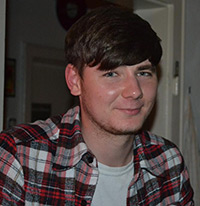
The main draw is the building’s mystery – what is contained behind those old doors and intriguing windows?
I desire to know what is behind this facade to get a glimpse into what this place once held and why it is now left to ruin.
Matt Bather, History Student in Liverpool, UK



